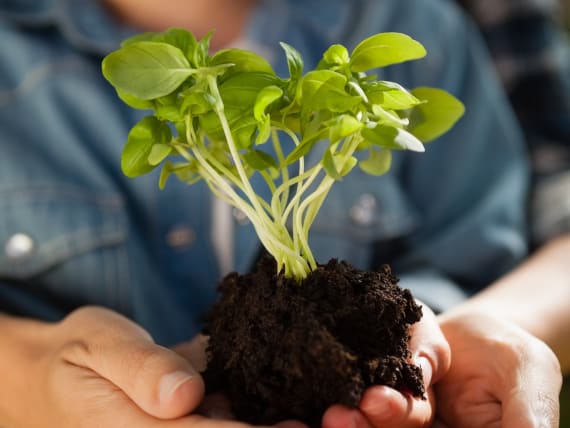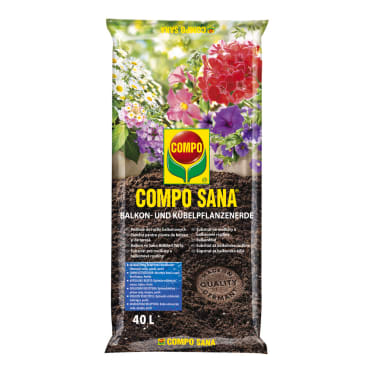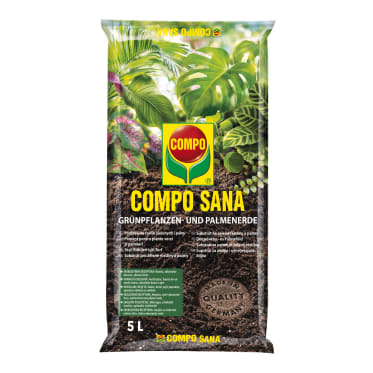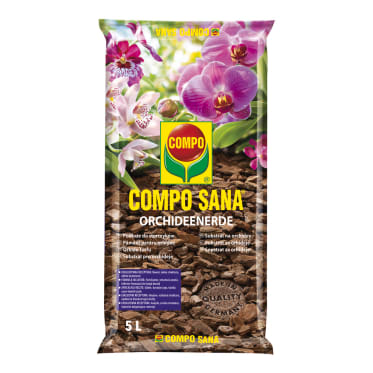Frequent search terms

- COMPO
- Guide
- Plant Care
- Basics
- Soil and compost
- Everything you need to know about potting soil
Everything you need to know about potting soil
There are many different potting soils. But how do you know which one is best suited to your plants? Find out what you need to keep in mind when purchasing and why not all soils are alike here.
What does potting soil consist of?
Since every plant has individual needs, different potting soils, also known as substrates, contain different combinations of ingredients. This means that potting soils can have very different properties. We distinguish between physical, biological and chemical properties.
Physical properties
- Structure and stability
- Pore volume
- Water capacity
- Aeration capacity
Biological properties
- Free from pests
- Free from or low in weed seeds
- Free from pathogenic organisms
Chemical properties
- pH value
- Salt content
- Nutrient content
- Buffering
The physical and biological properties are determined by the basic substrate of the potting soil; this could be compost, humus or peat, for example. Adding other substances such as clay minerals, quartz sand or perlite can enhance the properties and tailor them to the needs of different plants. The chemical properties also depend on the formula. For example, lime regulates the pH value, while fertilisers supply plants with nutrients over the long term. So, make sure to look out for the composition of the potting soil when purchasing.

Why is choosing the right potting soil so important?
Potting soil acts as a sort of living room for your plant. What do you need to feel at home within your own four walls? There should be enough space and options for relaxing, and it should not be too cold or too warm. The same goes for substrates: They support the roots and ensure that the plant stands firm. They also store water and nutrients and have enough air voids to ensure that air circulates around the roots.
How can I spot a high-quality potting soil?
Good potting soil contains enough nutrients, which are tailored to the specific plant variety, and a basic dressing that covers the nutrient requirements in the first few weeks. Another sign of quality is the pH value: The nutrients in the soil can only be absorbed by plants if the pH value is correct. Pay attention to the consistency of the soil: High-quality substrates are evenly mixed and crumble into loose but stable particles when touched. If nothing else, a smell test can help – good soil smells like a forest floor and should not smell foul or musty.
Tip
Most plants prefer soils with a pH value between 5.5 and 6.5. But acidophilic plants (lingonberries, cranberries, rhododendron) only thrive in a bed or in plant tubs with an acidic soil (pH value between 4 and 5).

What is so special about COMPO potting soils?
In 1956, it was the first potting soil to be sold in consumer-friendly packaging and to this day it is still the most-famous brand in our range: our COMPO SANA® potting soil. Its composition is precisely tailored to the needs of plants and contains everything required for healthy growth. Thanks to improved formulas and a special micronutrient mix, some of our substrates supply plants with nutrients for up to 12 weeks. Rigorous checks by the independent Agricultural Investigation and Research Institute of the Chamber of Agriculture (LUFA) and DIN ISO-certified quality management safeguard the consistently high quality of COMPO potting soils.
Incidentally, all our potting soils containing peat have been certified by the 'Responsibly Produced Peat' foundation. This European organisation has established a transparent certification system for responsible peat harvesting. It includes strict criteria concerning site selection, peat harvesting and later use of land.
How can I avoid using peat in my garden?
If you prefer to use alternatives to potting soils containing peat, you can now do so with a clear conscience. The peat component that is valuable for plants, present in most soils, is replaced by native bark humus, compost, coconut or wood fibres. The natural materials also support healthy growth.
Our COMPO potting soils










